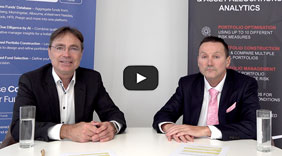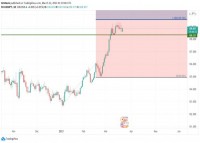|
|
Joy Abdullah, Brand Strategist, has more than 20 years of experience
across ASEAN & the Indian sub-continent in developing and managing national,
regional and international brands in a wide variety of industries covering
Islamic Financial services, tourism, B2b Halal, telecommunications, beverages,
real estate, tobacco, hospitality and healthcare.
In the March issue of Opalesque Islamic Finance Intelligence ("The Islamic
Window: Consumer Perception and Market Research in Islamic Finance") we
presented a rationale as to why a market survey across consumers would help the
Islamic Finance Industry, specifically:
"there is scant research available on the consumer perception and
understanding of Islamic finance, from product specifics (i.e. what is ijara?)
to the overall perception of the industry's value proposition (i.e. do consumers
actually care?). Such critical analysis would be invaluable to the industry,
specifically as input for the design of Islamic finance products that serve a
real need amongst retail consumers. Such consumer perception studies could
provide the Islamic Finance industry with a platform to:
- Develop basic financing products
adhering to Shariah, which are applicable across geographical boundaries,
thereby providing globally-operating IFI's a common product pool to use across
markets and jurisdictions.
- Support global standards as opposed to
country-specific or even company-specific SSB certification/approvals.
- Encourage the industry to innovate on
areas of brand identity through service improvements, technology inputs and
consumer wealth development."
We launched the survey (see reference link) in a collaborative manner and with a
concerted effort to understand the level of awareness and overall understanding
of consumers towards the Islamic finance industry (and its products and
services). In this regard the survey is a continuous effort, a sort of consumer
'barometer' as to how Islamic finance is viewed and accepted. It could even be
argued that once we have built enough historical data we can then create an
Islamic finance 'confidence index' or even a Muslim consumer 'confidence index',
or we would equally welcome a more impartial body to develop it using a far more
rigorous scientific approach.
Nonetheless, we zoom in on our initial findings. We expect to broaden the
geographical mix as the survey matures, although the current mix is very
healthy: the majority of responses come from the UK (13%), India (11%), Pakistan
(10%), the US (10%), Kuwait (7%) and Malaysia (6%). While these represent more
than half of all respondents we aim to expand the survey in other markets. The
only demographic bias we observe that needs to be addressed is the male/female
response rate (currently 84% to 16% respectively), whereas age and household
income exhibit a normal distribution.
A segway on professional background is also useful. Only 22% of respondents are
Islamic finance practitioners, 35% relate their work to Islamic finance, and 41%
are not related to Islamic finance. It might be counter-intuituve, but this is a
very positive indicator that the results reflect consumers and industry
outsiders (for lack of a better word). This provides validity to the results
while of course we acknowledge the importance of having responses from
practitioners. A future investigation remains in terms of analyzing the comments
and suggestions provided within the survey.
Summary of findings:
- Awareness: Whilst awareness levels are overall high, the need that comes out
is the lack of easily available industry and product information. Significantly
only 9% of respondents strongly agree that this is sufficient, whereas over 70%
are either neutral or negative. Therefore, there is an opportunity area for the
industry to collaborate within itself and with regulatory and standard-setting
bodies to have a more open communication and the sharing of information (whether
this is on product development, standardisation and/or regulatory developments).
- Industry Perception: Industry practitioners and consumers (as respondents to
this survey) clearly show the 'split' that exists in terms of 'sharia-compliant'
and 'sharia based'. This dissonance clearly shows that there are strong doubts
about true Sharia adherence of the products in the market. The survey highlights
that 43% of the respondents remained neutral (non-committal) on the statement
that "the current products are true to the teachings of Islam, and this
neutrality is mirrored in other responses within this section of the survey.
While this may raise concerns, there is an equally strong perception that
Islamic finance is a good way to promote Islamic values (56% on agreement, only
16% disagree).
- Product Perception: In terms of product perception, the data supports product
innovation being possible and Islamic finance products are not inferior to
conventional instruments (close to 40% of respondents feel this way).
Furthermore, the response numbers also justify that the industry can establish
itself outside of SEA and GCC (a solid 78%). However, perception on
institutional products is split with 30% of respondents preferring to remain
neutral - this can be interpreted as 'a need to have more product choices for
the institutional category'. On the retail front, 33% remain neutral in this
regard (however depth and width of product range would need to be checked). In
both cases, responses are skewed towards neutrality (with very low marks on
strongly agree and strongly disagree).
- Product Knowledge: Of the products listed the knowledge levels are good
across the board with the 3M taking the top spots (Murabaha, Musharaka, Mudaraba).
The early responses showed strongly for Ijara but this has since dissipated
although it remains as one of the most familiar products. On the other end of
the spectrum: Istijar (32% poor, 21% neutral), Arbun (31% poor), Wa'ad (27%),
Tawarruq (25% poor) and - surprisingly - equity screening (23% poor). With the
exception of the last one this exhibits a clear knowledge gap for those geared
towards derivative contracts.
- Acceptance: A substantial 72% of the respondents show a desire for a
fully compliant investment portfolio, followed with 74% claiming that Islamic
finance products are now a necessity in their financial planning. However,
respondents were strongly divided on the statement of whether current products
are serving their requirements as Muslims & faith in current products - with 33%
strongly agreeing and 33% remaining neutral. This split clearly indicates a
perceived doubt in acceptance of current products as being 'truly' Islamic.
- Brand Values: 61% of the respondents stated that an open, transparent and
honest business culture is overwhelmingly important. This is in conjunction with
82% have rated a strong brand promise as an important "must have" in order for
the product to succeed. This clearly shows the need for strong marketing in
order for the industry to develop brands through which consumer relationships
are grown. In addition, 53% of the respondents stated that they would be willing
to pay a higher price (or price premium in comparison to conventional products)
for fully compliant products. In terms of brand values, the respondents clearly
sat on the fence with 43% indicating that IFI's are not reflecting the values in
which they are based and that Islamic brands providing more value has not yet
been 'perceived' as 35% of respondents were neutral with 26% strongly agreeing
and 24% disagreeing.
Your feedback and comments are very important to us, please feel free to contact
the author via email.
|





 RSS
RSS









